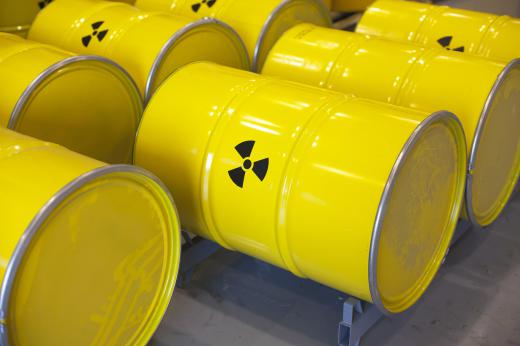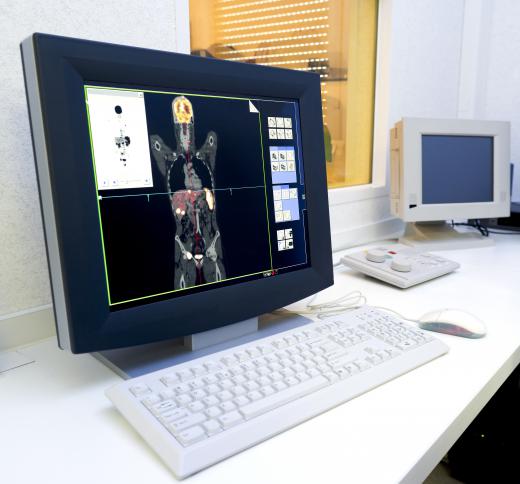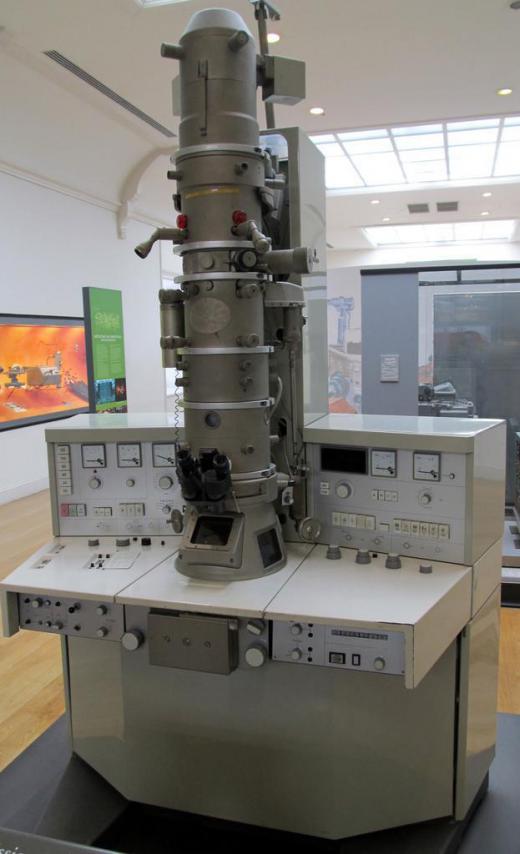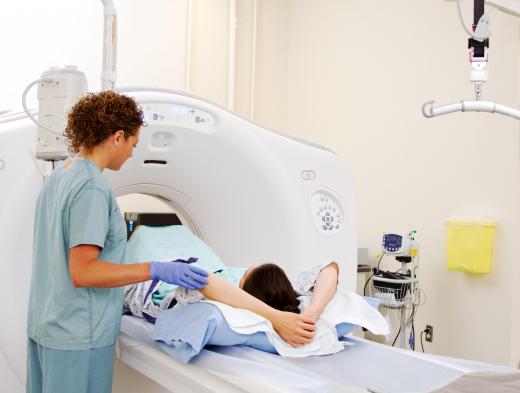What is an Isotope?
 Michael Anissimov
Michael Anissimov
An isotope is a variant on an element that has a different atomic weight from other variants. Except for the commonest form of hydrogen — which has only a proton — every atomic nucleus in normal matter is made of both protons and neutrons. Isotopes of a given element have the same number of protons, but different numbers of neutrons. They have essentially the same chemical properties, but differ slightly in their physical characteristics, such as melting point and boiling point. Some isotopes are unstable and tend to decay into other elements, giving off subatomic particles or radiation; these are radioactive and are known as radioisotopes.
When scientists refer to a particular isotope of an element, the mass number, or the number of protons plus the number of neutrons, appears at the top left, next to the symbol for the element. For example, the form of hydrogen that has a proton and a neutron is written as 2H. Similarly, 235U and 238U are two different isotopes of uranium. These are also commonly written as uranium-235 and uranium-238.
The Atomic Nucleus

Neutrons are electrically neutral, but protons have a positive electrical charge. Since like charges repel, a nucleus containing more than one proton needs something to prevent these particles from flying apart. That something is called the strong nuclear force, sometimes referred to as simply the strong force. It is much stronger than the electromagnetic force that is responsible for the repulsion between protons, but unlike this force, it has a very short range. The strong force binds protons and neutrons together in the nucleus, but the electromagnetic force wants to push the protons apart.
Stable and Unstable Nuclei

In the lighter elements, the strong force is able to hold the nucleus together as long as there are enough neutrons to dilute the electromagnetic force. Typically, in these elements, the numbers of protons and neutrons are about the same. In heavier elements, there has to be an excess of neutrons to provide stability. Beyond a certain point, however, there is no configuration that provides a stable nucleus. None of the elements heavier than lead have any stable isotopes.

Too many neutrons can also make an isotope unstable. For example, the commonest form of hydrogen has one proton and no neutrons, but there are two other forms, with one and two neutrons, called deuterium and tritium, respectively. Tritium is unstable because it has too many neutrons.
When an unstable, or radioactive, nucleus decays, it turns into a nucleus of another element. There are two mechanisms by which this can happen. Alpha decay happens when the strong force cannot hold all the protons in a nucleus together. Instead of just throwing out a proton, however, an alpha particle consisting of two protons and two neutrons is ejected. Protons and neutrons are tightly bound together and the alpha particle is a stable configuration.

Beta decay occurs when a nucleus has too many neutrons. One of the neutrons turns into a proton, which remains in the nucleus, and an electron, which is ejected. In tritium, for example, one of its two neutrons will, sooner or later, turn into a proton and an electron. This gives a nucleus with two protons and one neutron, which is a form of helium, known as 3He or helium-3. This isotope is stable, despite the excess of protons, because the nucleus is small enough for the strong force to hold it together.
Half-Lives
There is a fundamental uncertainty about the time it will take for an individual unstable nucleus to decay; however, for a given isotope, the rate of decay is predictable. It is possible to give a very precise value for the amount of time it will take for half of a sample of a particular isotope to decay into another element. This value is known as the half-life and can vary from a tiny fraction of a second to billions of years. The most common form of the element bismuth has a half-life a billion times as long as the estimated age of the universe. It was once thought to be the heaviest stable element, but was proved to be very slightly radioactive in 2003.
Properties
Besides the issue of radioactivity, different isotopes of an element show differing physical properties. Heavier forms, with more neutrons, typically have higher melting and boiling points, due to the fact that more energy is required to make their atoms and molecules move fast enough to bring about a change of state. For example, “heavy water,” a form of water in which normal hydrogen is replaced by the heavier deuterium, freezes at 38.9°F (3.82°C) and boils at 214.5°F (101.4°C), as opposed to 32°F (0°C) and 212°F (100°C), respectively, for ordinary water. Chemical reactions may proceed slightly more slowly for heavier isotopes for the same reason.
Uses
Probably the most famous isotope is 235U, because of its use in nuclear energy and weaponry. Its instability is such that it can undergo a nuclear chain reaction, releasing huge amounts of energy. “Enriched” uranium is uranium with a higher concentration of this isotope, while “depleted” uranium has a much lower concentration.
Radiometric dating uses the proportions of different isotopes to estimate the age of samples, such as biological materials or rocks. Radiocarbon dating, for example, uses the radioactive isotope 14C, or carbon-14, to date materials containing carbon of organic origin. The age and geological history of the Earth are known largely through comparing the proportions of various isotopes in rock samples.
In biology and medicine, small amounts of slightly radioactive isotopes can be used as atomic markers to trace the movement of various substances, such as drugs, through the body. More strongly radioactive isotopes may be used as a source of radiation to destroy tumors and cancerous growths. Helium-3, thought to exist in large quantities on the moon, is among the most promising long-term fuels for fusion power reactors. Using it effectively will require first mastering other forms of fusion, however.
AS FEATURED ON:
AS FEATURED ON:














Discussion Comments
This helps a lot when a chemistry test is tomorrow and helps just in case the professor might give us a pop quiz.
To people who said this was simple: Well, I'm in 5th grade, and I'm working on a science project. This isn't exactly easy for me to understand, because I'm 10, but I figure it out. Eventually.
Thank you wiseGEEK! You are a lot easier to understand then Wikipedia sometimes. (I'm 10, duh. We don't understand everything!)
thanks guys, my teacher would be amazed.
thank you this was very helpful.
Where can you find a site for how they discovered isotopes?
hooray! thank you wisegeek. after reading other websites, I thought I'd never understand Isotopes.
Wow, thanks. i love you guys!
This is helpful. my teacher will be pleased.
thanks a lot!
i like science. it is very fun. thank you very much good friends at wisegeek.
what is the difference between natural and synthetic isotopes? I really need to know the answer to that, thanks anyway
this site is so helpful. i love you guys.
Thank you! Why can't all websites explain things in plain language! I finally get it!
Good use of website.
this is good information clearing mind with simple language.
thanks for the info.
yes frederick soddy received a nobel prize in 1921.
Frederick Soddy received Nobel Prize in 1921, for his contributions and work with isotopes.
Post your comments